Abstract
Nonvolatile residue (NVR), a waste stream from the manufacture of nylon 6′6′, contains mainly small carboxylic acids and alcohols, making it a potential fermentation substrate. Above a concentration of 1.3% (wt/vol), NVR inhibited the growth of all microorganisms tested. The most inhibitory of the major NVR components were the monocarboxylic acids (C4 to C6) and ε-caprolactone. The inhibitory effects of NVR could be avoided by using a carbon-limited chemostat. Microorganisms were found that could use all of the major NVR components as carbon and energy sources. One such organism, Pseudomonas cepacia, was grown in a carbon-limited chemostat with a medium feed concentration of 20.5 g of NVR liter−1. At a dilution rate of 0.14 h−1 the yield of biomass (Yx/s, where x is biomass produced and s is substrate used) from NVR was 18% (neglecting the water content of NVR). It was concluded that NVR would be a suitable carbon source for certain industrial fermentation processes such as the production of poly-β-hydroxybutyric acid.
Full text
PDF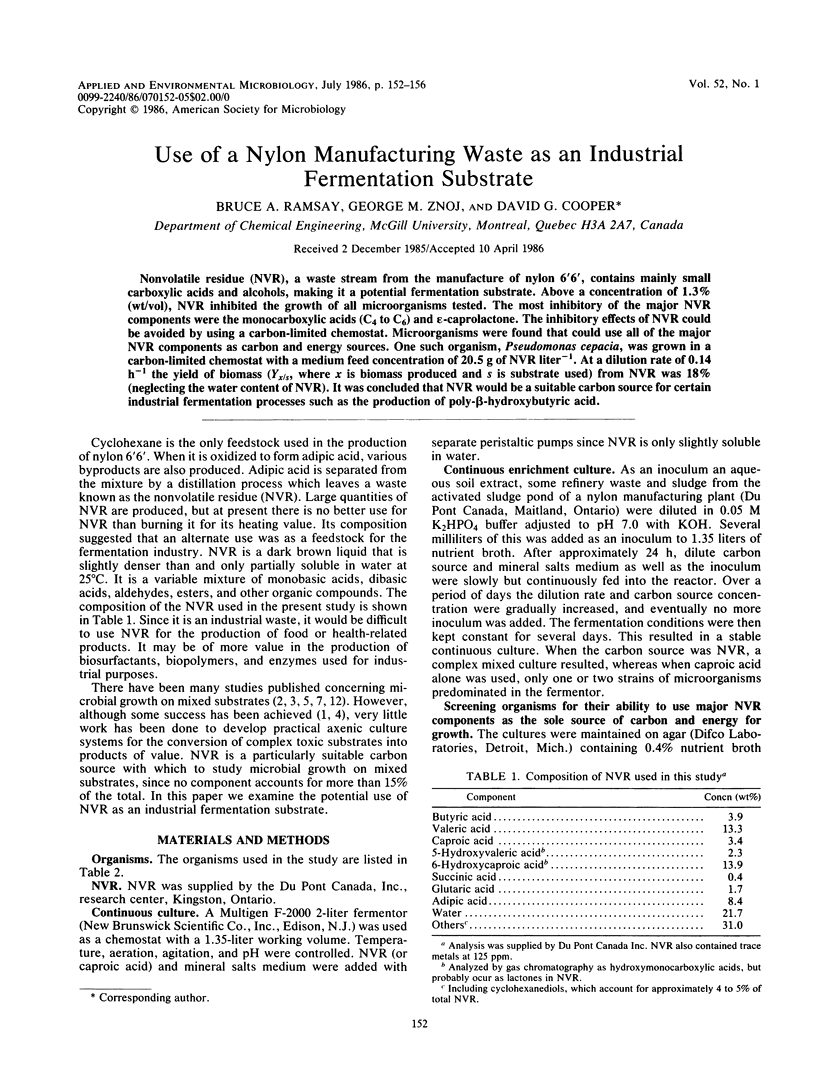
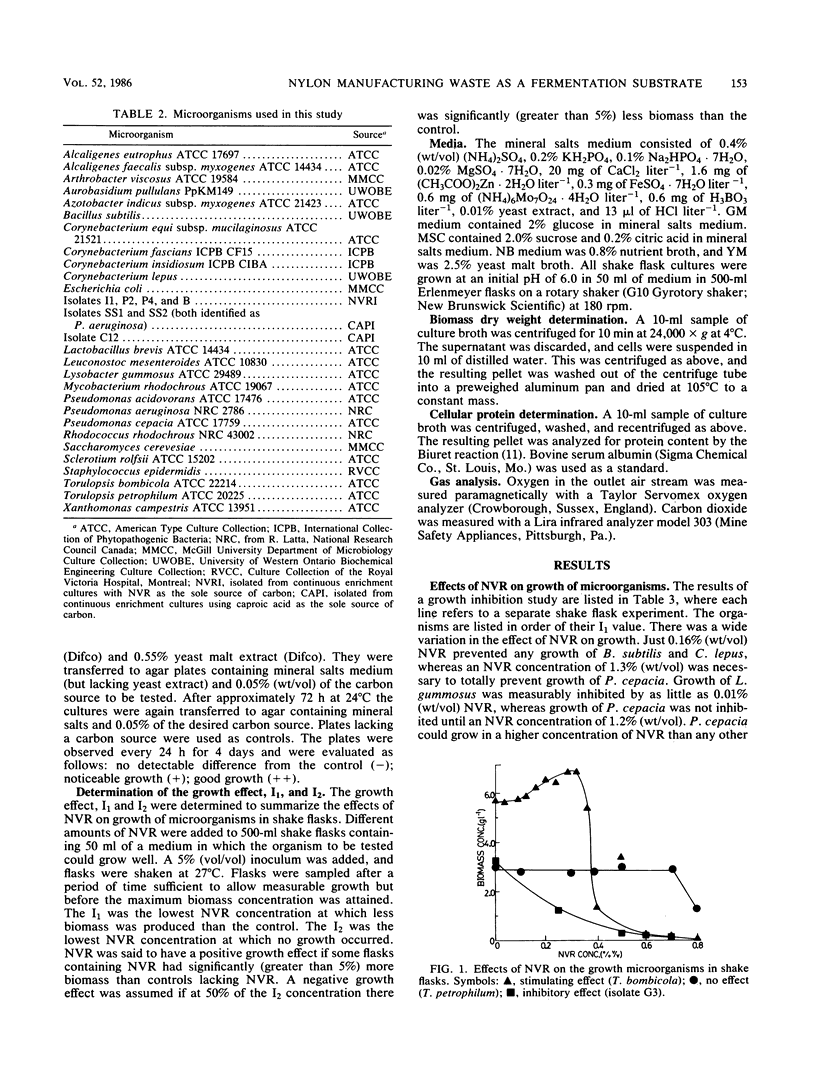
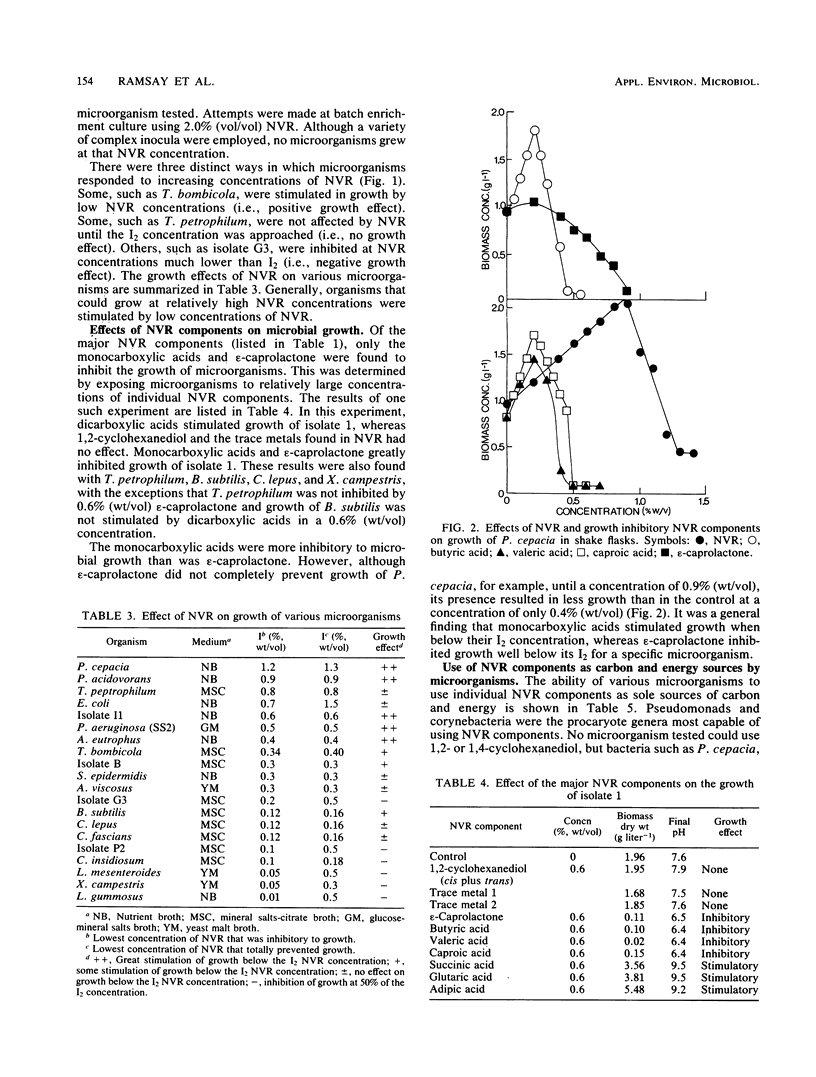
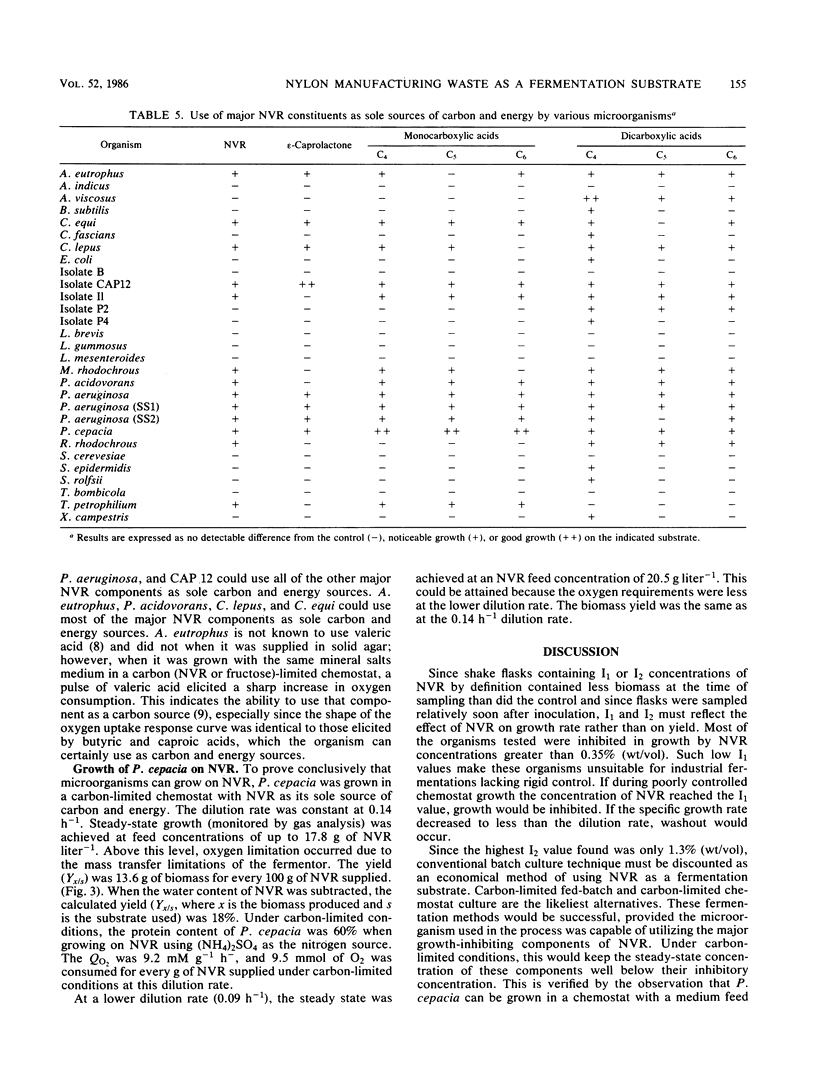
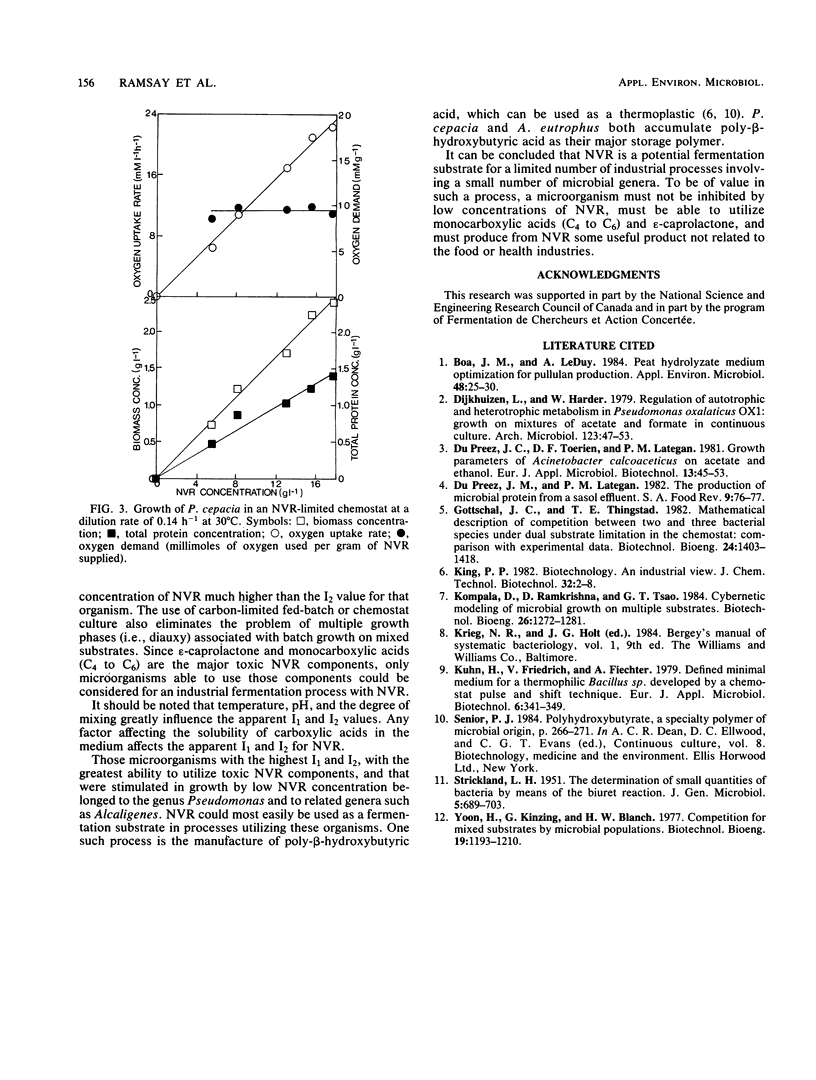
Selected References
These references are in PubMed. This may not be the complete list of references from this article.
- Boa J. M., Leduy A. Peat hydrolysate medium optimization for pullulan production. Appl Environ Microbiol. 1984 Jul;48(1):26–30. doi: 10.1128/aem.48.1.26-30.1984. [DOI] [PMC free article] [PubMed] [Google Scholar]
- Yoon H., Klinzing G., Blanch H. W. Competition for mixed substrates by microbial populations. Biotechnol Bioeng. 1977 Aug;19(8):1193–1210. doi: 10.1002/bit.260190809. [DOI] [PubMed] [Google Scholar]


